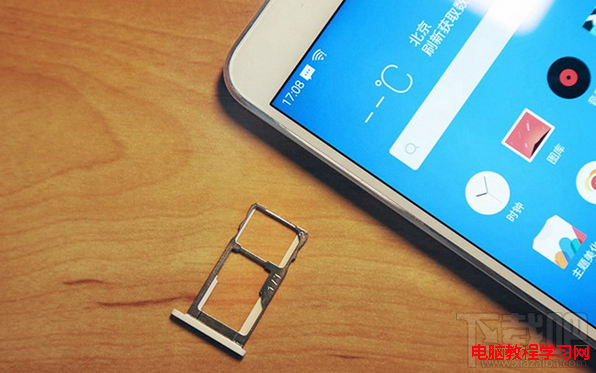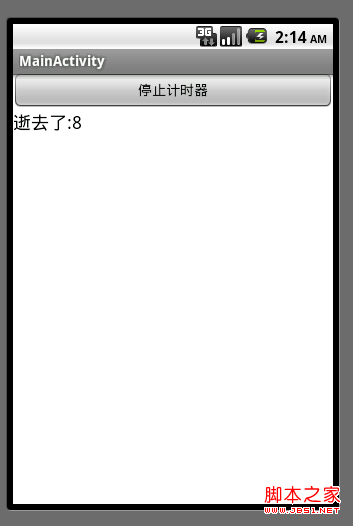編輯:關於Android編程
一、ExtAudioRecorder
錄音類,來源於http://stackoverflow.com/questions/4871149/how-to-record-voice-in-wav-formt-using-android
package com.jltxgcy.wavrecord;
import java.io.File;
import java.io.IOException;
import java.io.RandomAccessFile;
import android.media.AudioFormat;
import android.media.AudioRecord;
import android.media.MediaRecorder;
import android.media.MediaRecorder.AudioSource;
import android.util.Log;
public class ExtAudioRecorder
{
private final static int[] sampleRates = {44100, 22050, 11025, 8000};
public static ExtAudioRecorder getInstanse(Boolean recordingCompressed)
{
ExtAudioRecorder result = null;
if(recordingCompressed)
{
result = new ExtAudioRecorder( false,
AudioSource.MIC,
sampleRates[3],
AudioFormat.CHANNEL_CONFIGURATION_MONO,
AudioFormat.ENCODING_PCM_16BIT);
}
else
{
int i=0;
do
{
result = new ExtAudioRecorder( true,
AudioSource.MIC,
sampleRates[i],
AudioFormat.CHANNEL_CONFIGURATION_MONO,
AudioFormat.ENCODING_PCM_16BIT);
} while((++i cAmplitude)
{ // Check amplitude
cAmplitude = curSample;
}
}
}
else
{ // 8bit sample size
for (int i=0; i cAmplitude)
{ // Check amplitude
cAmplitude = buffer[i];
}
}
}
}
catch (IOException e)
{
Log.e(ExtAudioRecorder.class.getName(), "Error occured in updateListener, recording is aborted");
//stop();
}
}
public void onMarkerReached(AudioRecord recorder)
{
// NOT USED
}
};
/**
*
*
* Default constructor
*
* Instantiates a new recorder, in case of compressed recording the parameters can be left as 0.
* In case of errors, no exception is thrown, but the state is set to ERROR
*
*/
public ExtAudioRecorder(boolean uncompressed, int audioSource, int sampleRate, int channelConfig, int audioFormat)
{
try
{
rUncompressed = uncompressed;
if (rUncompressed)
{ // RECORDING_UNCOMPRESSED
if (audioFormat == AudioFormat.ENCODING_PCM_16BIT)
{
bSamples = 16;
}
else
{
bSamples = 8;
}
if (channelConfig == AudioFormat.CHANNEL_CONFIGURATION_MONO)
{
nChannels = 1;
}
else
{
nChannels = 2;
}
aSource = audioSource;
sRate = sampleRate;
aFormat = audioFormat;
framePeriod = sampleRate * TIMER_INTERVAL / 1000;
bufferSize = framePeriod * 2 * bSamples * nChannels / 8;
if (bufferSize < AudioRecord.getMinBufferSize(sampleRate, channelConfig, audioFormat))
{ // Check to make sure buffer size is not smaller than the smallest allowed one
bufferSize = AudioRecord.getMinBufferSize(sampleRate, channelConfig, audioFormat);
// Set frame period and timer interval accordingly
framePeriod = bufferSize / ( 2 * bSamples * nChannels / 8 );
Log.w(ExtAudioRecorder.class.getName(), "Increasing buffer size to " + Integer.toString(bufferSize));
}
audioRecorder = new AudioRecord(audioSource, sampleRate, channelConfig, audioFormat, bufferSize);
if (audioRecorder.getState() != AudioRecord.STATE_INITIALIZED)
throw new Exception("AudioRecord initialization failed");
audioRecorder.setRecordPositionUpdateListener(updateListener);
audioRecorder.setPositionNotificationPeriod(framePeriod);
} else
{ // RECORDING_COMPRESSED
mediaRecorder = new MediaRecorder();
mediaRecorder.setAudioSource(MediaRecorder.AudioSource.MIC);
mediaRecorder.setOutputFormat(MediaRecorder.OutputFormat.THREE_GPP);
mediaRecorder.setAudioEncoder(MediaRecorder.AudioEncoder.AMR_NB);
}
cAmplitude = 0;
filePath = null;
state = State.INITIALIZING;
} catch (Exception e)
{
if (e.getMessage() != null)
{
Log.e(ExtAudioRecorder.class.getName(), e.getMessage());
}
else
{
Log.e(ExtAudioRecorder.class.getName(), "Unknown error occured while initializing recording");
}
state = State.ERROR;
}
}
/**
* Sets output file path, call directly after construction/reset.
*
* @param output file path
*
*/
public void setOutputFile(String argPath)
{
try
{
if (state == State.INITIALIZING)
{
filePath = argPath;
if (!rUncompressed)
{
mediaRecorder.setOutputFile(filePath);
}
}
}
catch (Exception e)
{
if (e.getMessage() != null)
{
Log.e(ExtAudioRecorder.class.getName(), e.getMessage());
}
else
{
Log.e(ExtAudioRecorder.class.getName(), "Unknown error occured while setting output path");
}
state = State.ERROR;
}
}
/**
*
* Returns the largest amplitude sampled since the last call to this method.
*
* @return returns the largest amplitude since the last call, or 0 when not in recording state.
*
*/
public int getMaxAmplitude()
{
if (state == State.RECORDING)
{
if (rUncompressed)
{
int result = cAmplitude;
cAmplitude = 0;
return result;
}
else
{
try
{
return mediaRecorder.getMaxAmplitude();
}
catch (IllegalStateException e)
{
return 0;
}
}
}
else
{
return 0;
}
}
/**
*
* Prepares the recorder for recording, in case the recorder is not in the INITIALIZING state and the file path was not set
* the recorder is set to the ERROR state, which makes a reconstruction necessary.
* In case uncompressed recording is toggled, the header of the wave file is written.
* In case of an exception, the state is changed to ERROR
*
*/
public void prepare()
{
try
{
if (state == State.INITIALIZING)
{
if (rUncompressed)
{
if ((audioRecorder.getState() == AudioRecord.STATE_INITIALIZED) & (filePath != null))
{
// write file header
randomAccessWriter = new RandomAccessFile(filePath, "rw");
randomAccessWriter.setLength(0); // Set file length to 0, to prevent unexpected behavior in case the file already existed
randomAccessWriter.writeBytes("RIFF");
randomAccessWriter.writeInt(0); // Final file size not known yet, write 0
randomAccessWriter.writeBytes("WAVE");
randomAccessWriter.writeBytes("fmt ");
randomAccessWriter.writeInt(Integer.reverseBytes(16)); // Sub-chunk size, 16 for PCM
randomAccessWriter.writeShort(Short.reverseBytes((short) 1)); // AudioFormat, 1 for PCM
randomAccessWriter.writeShort(Short.reverseBytes(nChannels));// Number of channels, 1 for mono, 2 for stereo
randomAccessWriter.writeInt(Integer.reverseBytes(sRate)); // Sample rate
randomAccessWriter.writeInt(Integer.reverseBytes(sRate*bSamples*nChannels/8)); // Byte rate, SampleRate*NumberOfChannels*BitsPerSample/8
randomAccessWriter.writeShort(Short.reverseBytes((short)(nChannels*bSamples/8))); // Block align, NumberOfChannels*BitsPerSample/8
randomAccessWriter.writeShort(Short.reverseBytes(bSamples)); // Bits per sample
randomAccessWriter.writeBytes("data");
randomAccessWriter.writeInt(0); // Data chunk size not known yet, write 0
buffer = new byte[framePeriod*bSamples/8*nChannels];
state = State.READY;
}
else
{
Log.e(ExtAudioRecorder.class.getName(), "prepare() method called on uninitialized recorder");
state = State.ERROR;
}
}
else
{
mediaRecorder.prepare();
state = State.READY;
}
}
else
{
Log.e(ExtAudioRecorder.class.getName(), "prepare() method called on illegal state");
release();
state = State.ERROR;
}
}
catch(Exception e)
{
if (e.getMessage() != null)
{
Log.e(ExtAudioRecorder.class.getName(), e.getMessage());
}
else
{
Log.e(ExtAudioRecorder.class.getName(), "Unknown error occured in prepare()");
}
state = State.ERROR;
}
}
/**
*
*
* Releases the resources associated with this class, and removes the unnecessary files, when necessary
*
*/
public void release()
{
if (state == State.RECORDING)
{
stop();
}
else
{
if ((state == State.READY) & (rUncompressed))
{
try
{
randomAccessWriter.close(); // Remove prepared file
}
catch (IOException e)
{
Log.e(ExtAudioRecorder.class.getName(), "I/O exception occured while closing output file");
}
(new File(filePath)).delete();
}
}
if (rUncompressed)
{
if (audioRecorder != null)
{
audioRecorder.release();
}
}
else
{
if (mediaRecorder != null)
{
mediaRecorder.release();
}
}
}
/**
*
*
* Resets the recorder to the INITIALIZING state, as if it was just created.
* In case the class was in RECORDING state, the recording is stopped.
* In case of exceptions the class is set to the ERROR state.
*
*/
public void reset()
{
try
{
if (state != State.ERROR)
{
release();
filePath = null; // Reset file path
cAmplitude = 0; // Reset amplitude
if (rUncompressed)
{
audioRecorder = new AudioRecord(aSource, sRate, nChannels+1, aFormat, bufferSize);
}
else
{
mediaRecorder = new MediaRecorder();
mediaRecorder.setAudioSource(MediaRecorder.AudioSource.MIC);
mediaRecorder.setOutputFormat(MediaRecorder.OutputFormat.THREE_GPP);
mediaRecorder.setAudioEncoder(MediaRecorder.AudioEncoder.AMR_NB);
}
state = State.INITIALIZING;
}
}
catch (Exception e)
{
Log.e(ExtAudioRecorder.class.getName(), e.getMessage());
state = State.ERROR;
}
}
/**
*
*
* Starts the recording, and sets the state to RECORDING.
* Call after prepare().
*
*/
public void start()
{
if (state == State.READY)
{
if (rUncompressed)
{
payloadSize = 0;
audioRecorder.startRecording();
audioRecorder.read(buffer, 0, buffer.length);
}
else
{
mediaRecorder.start();
}
state = State.RECORDING;
}
else
{
Log.e(ExtAudioRecorder.class.getName(), "start() called on illegal state");
state = State.ERROR;
}
}
/**
*
*
* Stops the recording, and sets the state to STOPPED.
* In case of further usage, a reset is needed.
* Also finalizes the wave file in case of uncompressed recording.
*
*/
public void stop()
{
if (state == State.RECORDING)
{
if (rUncompressed)
{
audioRecorder.stop();
try
{
randomAccessWriter.seek(4); // Write size to RIFF header
randomAccessWriter.writeInt(Integer.reverseBytes(36+payloadSize));
randomAccessWriter.seek(40); // Write size to Subchunk2Size field
randomAccessWriter.writeInt(Integer.reverseBytes(payloadSize));
randomAccessWriter.close();
}
catch(IOException e)
{
Log.e(ExtAudioRecorder.class.getName(), "I/O exception occured while closing output file");
state = State.ERROR;
}
}
else
{
mediaRecorder.stop();
}
state = State.STOPPED;
}
else
{
Log.e(ExtAudioRecorder.class.getName(), "stop() called on illegal state");
state = State.ERROR;
}
}
/*
*
* Converts a byte[2] to a short, in LITTLE_ENDIAN format
*
*/
private short getShort(byte argB1, byte argB2){
return (short)(argB1 | (argB2 << 8));
}
} 講解如何使用錄音類,參考http://i-liger.com/article/android-wav-audio-recording
package com.jltxgcy.wavrecord;
import android.app.Activity;
import android.os.Bundle;
import android.view.View;
import android.view.View.OnClickListener;
public class MainActivity extends Activity {
private ExtAudioRecorder extAudioRecorder;
public void onCreate(Bundle savedInstanceState) {
super.onCreate(savedInstanceState);
setContentView(R.layout.activity_main);
extAudioRecorder = ExtAudioRecorder.getInstanse(false);
findViewById(R.id.start).setOnClickListener(new OnClickListener() {
@Override
public void onClick(View arg0) {
extAudioRecorder.setOutputFile("/sdcard/my.wav");
extAudioRecorder.prepare();
extAudioRecorder.start();
}
});
findViewById(R.id.stop).setOnClickListener(new OnClickListener() {
@Override
public void onClick(View arg0) {
extAudioRecorder.stop();
extAudioRecorder.release();
}
});
}
}
三、activity_main.xml
兩個按鈕,一個開始錄音,一個停止錄音
 Android動畫之一:Drawable Animation
Android動畫之一:Drawable Animation
准備寫幾篇博客講解Android的動畫,首先介紹Android動畫的整體輪廓。 Android動畫主要分為三大類 View Animation Drawable An
 魅藍metal如何裝卡 魅藍metal手機怎麼上sim卡
魅藍metal如何裝卡 魅藍metal手機怎麼上sim卡
魅族發布了今年最後一款歷史性新品---魅藍metal,魅藍metal依舊采用了與或卡托(單卡槽雙卡位)設計,且支持雙卡雙待,目前預約的有移動定制版和公開版。
 Android自定義CheckBox CheckGroup超好用
Android自定義CheckBox CheckGroup超好用
在MaterialDialog 仿Android 5.0原生的AlertDialog樣式的對話框一文中以及詳細介紹了單選/多選對話框的用法,但是在現實開發中,我們可能需要
 android 多線程技術應用
android 多線程技術應用
多線程案例——計時器 這個案例中,屏幕啟動之後,進入如圖所示的界面。 屏幕上有一個文本框用於顯示逝去的時間,此外還有一個“停止計時”按鈕。案例的用例圖如圖所示。 &nbs